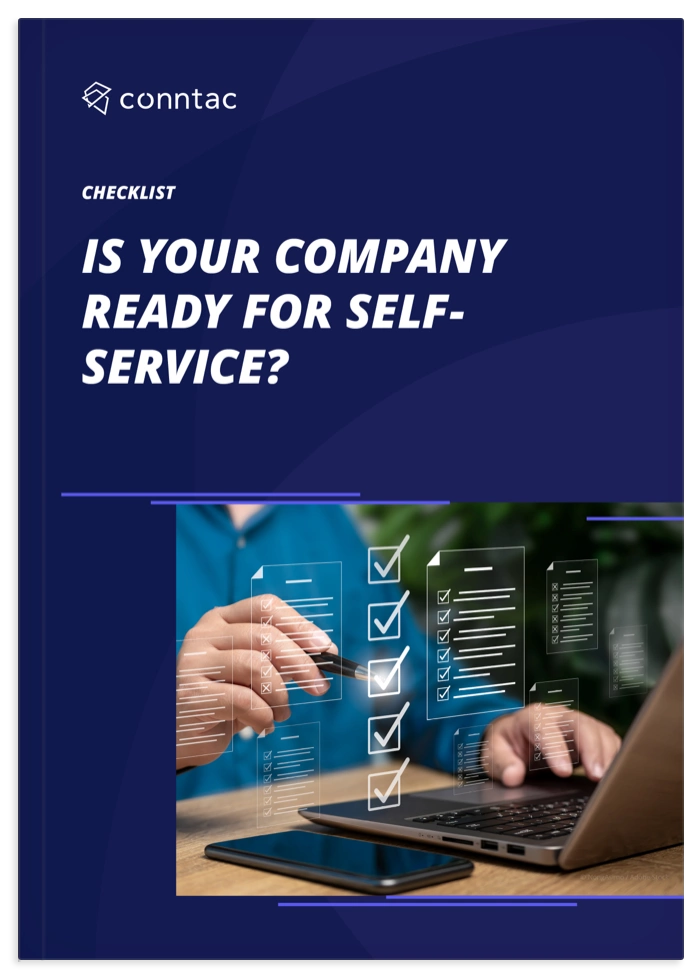Do you know this feeling of pride and the associated feeling of wanting to report it to those around you? It is about the phenomenon of having repaired an appliance or other everyday object independently – without help. Having a finished piece of furniture in front of you after you have painstakingly built it yourself is also one of these kinds of emotions. Being able to help yourself promotes self-determination and self-efficacy enormously. Why customers feel a positive brand association with the company when using customer self-service solutions – that’s what this blog post is about.
Customers expect self-service based on private habits
About 81% of customers prefer to solve their problems on their own instead of contacting customer service. This is shown by a survey conducted by Harvard Business in 2017 – and the trend is rising (Kick-Ass Customer Service). No wonder. Google and YouTube are full of tutorials and forums in the form of videos or checklists for troubleshooting countless use cases, problems and technical defects. For every problem there is a solution. In the meantime, it is impossible to imagine everyday life without the smartphone. It is therefore all the less surprising that when problems or questions arise, the search engines – now even Chat GPT, Siri or Alexa – are asked for help within seconds. Consequently, they try to solve the problem on their own in the long or short term instead of contacting the customer service. Accordingly, it is better to take the problem into one’s own hands before asking for help.
This may also have something to do with the fact that, on the one hand, the warranties of many devices have expired and, on the other hand, that millennials in particular are constantly consuming more responsibly and distancing themselves from a so-called throwaway society. In order to save costs, we now prefer to roll up our sleeves ourselves – before contacting customer service or looking for substitute products. However, customers are increasingly adapting these private habits to companies, preferring to take things into their own hands and thus expecting companies to meet these needs. Self-service solutions are becoming indispensable – but they offer companies numerous advantages, which we will discuss in more detail below.
Control and autonomy through Customer Self-Service
As explained before, the feeling of having solved something independently gives rise to feelings of happiness. But it gives clients and customers alike a sense of control and autonomy. They appreciate the active participation in the elimination of sudden problems and disturbances. On the one hand, it gives them transparency when it comes to their agreed services or purchased products, and on the other hand, attempts at a solution can be started within seconds – without the involvement of third parties as well as without loss of time and without media disruption.
At the same time, the use of customer self-service shows customers that it is also important to your company that customers’ time and autonomy is valued. Another aspect that should not be underestimated is that customer self-service solutions can potentially reduce existing social interaction problems.
Happiness through autonomy promotes brand loyalty
Ultimately, self-service provides users with a completely new service experience. Anyone who has ever repaired or solved something independently knows what it feels like. The experience of having achieved something is something you would like to share with everyone afterwards. One feels heroic and experiences triumph due to an increased awareness of one’s own potential and abilities. Out of pure joy, the inner confirmation and your own applause, you would like to pat yourself on the back. Being proud of yourself means standing by yourself. If customers solve individual incidents independently with your customer self-service app, they automatically associate this positive feeling with your brand. Autonomous self-service apps for use in customer service therefore promote brand loyalty.
Do you know this feeling of pride and the associated feeling of wanting to report it to those around you? It is about the phenomenon of having repaired an appliance or other everyday object independently – without help. Having a finished piece of furniture in front of you after you have painstakingly built it yourself is also one of these kinds of emotions. Being able to help yourself promotes self-determination and self-efficacy enormously. Why customers feel a positive brand association with the company when using customer self-service solutions – that’s what this blog post is about.
Customers expect self-service based on private habits
About 81% of customers prefer to solve their problems on their own instead of contacting customer service. This is shown by a survey conducted by Harvard Business in 2017 – and the trend is rising (Kick-Ass Customer Service). No wonder. Google and YouTube are full of tutorials and forums in the form of videos or checklists for troubleshooting countless use cases, problems and technical defects. For every problem there is a solution. In the meantime, it is impossible to imagine everyday life without the smartphone. It is therefore all the less surprising that when problems or questions arise, the search engines – now even Chat GPT, Siri or Alexa – are asked for help within seconds. Consequently, they try to solve the problem on their own in the long or short term instead of contacting the customer service. Accordingly, it is better to take the problem into one’s own hands before asking for help.
This may also have something to do with the fact that, on the one hand, the warranties of many devices have expired and, on the other hand, that millennials in particular are constantly consuming more responsibly and distancing themselves from a so-called throwaway society. In order to save costs, we now prefer to roll up our sleeves ourselves – before contacting customer service or looking for substitute products. However, customers are increasingly adapting these private habits to companies, preferring to take things into their own hands and thus expecting companies to meet these needs. Self-service solutions are becoming indispensable – but they offer companies numerous advantages, which we will discuss in more detail below.
Control and autonomy through Customer Self-Service
As explained before, the feeling of having solved something independently gives rise to feelings of happiness. But it gives clients and customers alike a sense of control and autonomy. They appreciate the active participation in the elimination of sudden problems and disturbances. On the one hand, it gives them transparency when it comes to their agreed services or purchased products, and on the other hand, attempts at a solution can be started within seconds – without the involvement of third parties as well as without loss of time and without media disruption.
At the same time, the use of customer self-service shows customers that it is also important to your company that customers’ time and autonomy is valued. Another aspect that should not be underestimated is that customer self-service solutions can potentially reduce existing social interaction problems.
Happiness through autonomy promotes brand loyalty
Ultimately, self-service provides users with a completely new service experience. Anyone who has ever repaired or solved something independently knows what it feels like. The experience of having achieved something is something you would like to share with everyone afterwards. One feels heroic and experiences triumph due to an increased awareness of one’s own potential and abilities. Out of pure joy, the inner confirmation and your own applause, you would like to pat yourself on the back. Being proud of yourself means standing by yourself. If customers solve individual incidents independently with your customer self-service app, they automatically associate this positive feeling with your brand. Autonomous self-service apps for use in customer service therefore promote brand loyalty.











